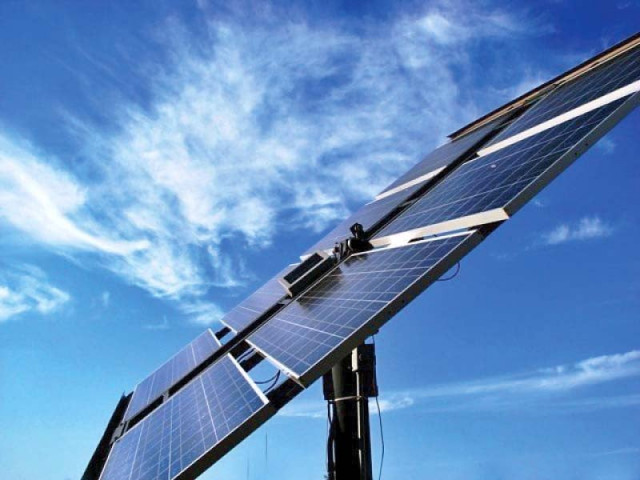Tariff cut on excess solar units likely
Tariff for excess units generated by rooftop solar producers to be reduced to Rs9 per unit from Rs19.32

As part of the government’s plan to promote solar energy, the National Electric Power Regulatory Authority (Nepra) on Tuesday hinted at reducing the power tariff for the excess units generated by rooftop solar power producers to Rs9 per unit from the existing Rs19.32 per unit, a move likely to discourage new entrants in the sector.
The government has planned to add 10,000 MW to the national grid by promoting and incentivising solar power projects by domestic consumers. In this backdrop, the power regulator has moved to cut tariffs for electricity generated through rooftop solar. This step, however, has been rejected by the solar industry.
Nepra has also initiated a move to cut tariffs to export power by rooftop solar power producers to power distribution companies for excess electricity.
During a public hearing conducted by the regulator, the solar power industry strongly opposed a move to cut tariffs. They maintained that it would discourage the installation of rooftop solar panels. In total, there are 20,700 roof-top solar power generators in Pakistan.
“We did not want to generate another IPP (Independent Power Producer). This was not supposed to be a money-making venture,” clarified Nepra Chairman, Tauseef Farooqi while chairing a public hearing on the proposed amendment to the National Electric Power Regulatory Authority (Alternative and Renewable Energy) Distributed Generation and Net Metering Regulations, 2015.
Farooqi further said that “NEPRA could have taken a unilateral decision, but had instead invited the stakeholders to understand their viewpoint.”
At the hearing, the Nepra chairman also threatened to take action against the stakeholders of the solar power industry who opposed the reduction in tariff.
When told that the power regulator was discouraging the solar industry, the Nepra chairman responded by saying, “We are not discouraging but are adding a renewable capacity of 10,000 MW. We are modernising the energy sector and have classified hydro-power as renewable energy. So now, renewables have a 35% share in total energy generation.”
It is to be noted that on December 20, 2017, Nepra brought the first amendments to these rules by issuing another SRO 1261 (J)/2017 in which the term of the agreement between the Distributed Generator and Distribution Company (DISCO) was increased from three to seven years.
Interestingly, in Regulation 14, a sub-regulation (5) was inserted, stating that “the Authority may determine the tariff payable by the Distribution Company to the Distributed Generator from time to time; provided, however, the tariff once awarded to a Distributed Generator shall remain valid for a term of the Agreement/Licence.”
Farooqi further explained that the “reduction in power tariff is for netting off the cost of excess units. We think that Rs9 per unit should be paid for excess units. This year, we have paid nearly Rs1,400 billion as the capacity cost to IPPs which is more than the combined defence budget of all three forces. In total, we have around 42,000 MWs in installed capacity.”
He added that the “payback period of solar rooftop plants is nearly 3.6 years and, with an increase in tariff amount, this period will reduce.”
Published in The Express Tribune, September 28th, 2022.
Like Business on Facebook, follow @TribuneBiz on Twitter to stay informed and join in the conversation.





1735506669-0/image-(16)1735506669-0-208x130.webp)













COMMENTS
Comments are moderated and generally will be posted if they are on-topic and not abusive.
For more information, please see our Comments FAQ